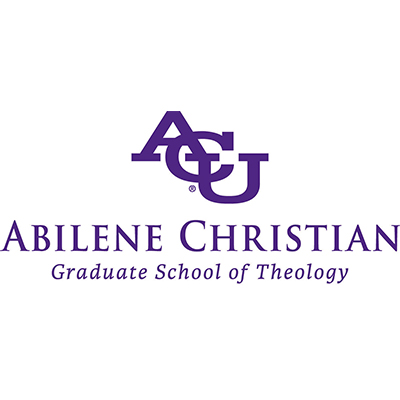Diversity Within Unity
Ever since taking a Christology course during my undergraduate years, I have loved dwelling on the ways human beings are to reflect God as images of God. More specifically, I enjoy pondering the ways in which the Church, as an aggregate of Spirit-filled Jesus followers, is called to reflect the divine realities of the social Trinity.
Stanley Grenz writes: “Through the doctrine of the Trinity we affirm that, although differentiated from each other both ontologically and functionally, the three trinitarian persons comprise a unity that entails diversity.” In order to not be considered a heretic throughout much of mainstream Christian history, one needs to believe, among other things, the Trinity to be One, Three, and Equal. Another way of putting that is the Trinity has eternally maintained the qualities of unity, diversity, and equality. Underemphasizing or overemphasizing any of these three characteristics develops into a particular heresy earning one a range of undesirable outcomes, depending on the charity of that particular Christian era. Grenz later describes the Trinity as “diversity within unity.” Because God as Trinity perfectly exemplifies diversity within unity, the Church as a corporate family of God’s image-bearing children ought likewise to exemplify diversity within unity.
We can see this as an ideal from the beginning of Jesus’s ministry until now. Jesus picked 12 apostles of notable diversity and united them with a common purpose. This common purpose is how a tax collector—a wealthy Roman henchman—could co-exist and co-operate with poor fishermen and a Roman-subverting Zealot. Beyond the apostles, we see diversity within unity among first century churches. Due to being united in the name of Jesus, many earthly divisions of male and female, Jew and Samarian or Gentile, slave and free, wealthy and poor, etc. were being transformed within the Church in ways quite uncommon in society. Yet it is this transformative development of diversity within unity that still caused many of the early churches’ problems. Most notably, the inability of Jewish and Gentile Christians to discern what diversity within unity might look like in a church setting accounts for a substantive portion of the epistolary literature.
The Church today shares the same, beautiful call of reflecting the diverse, unified, equal Trinity. We may have moved on from the Jew-Gentile division, but in America, we have inherited what at times feels like more divisions than we can track. So we talk about conservative Christians and progressive Christians. We have our white churches and black churches. Red-state Christians and blue-state Christians. Poor Christians and wealthy Christians. Rural Christians and urban Christians. Denominational Christians and non-denominational Christians who, quite ironically, are approaching the largest “denomination” of American Christianity. All of us sense these divisions at a personal level, and if we are honest with ourselves, we often identify righteously with one side or the other. Polarity is our zeitgeist. The growing emphasis on the adjective in front of what kind of Christian one is leads to division over unity, rather than diversity within unity. Diversity has yielded to division.
The opposite approach might be less common today, but can mar the image of God in the Church just as much. This approach overemphasizes unity by pretending we have no earthly differences that could and should potentially lead to varying and even conflicting perspectives. This mindset has been detectable in wider culture when seeking “color-blindness” has upheld racial disparities by suppressing differences under the surface. Neither the Church nor the wider culture can achieve meaningful unity by putting on a fake smile and pretending we all think, feel, and act the same way at all times. “Unity” has been achieved in many cases throughout history solely by further suppression and oppression. Unity has yielded to uniformity.
It seems as if we are left with a tension-filled paradox, as I have come to expect when discussing anything difficult in theology, philosophy, and life. This should especially not surprise us in this particular conversation, however, because the trinitarian reality the Church seeks to reflect is itself a paradox. Diversity within unity is a paradoxical truth we must affirm concerning the Trinity, and it is a paradoxical ideal we must seek and embody in the Church.
Thus, I put forth the following two ideals which we must wrestle with and hold in a delicate balance. 1) The Church is composed of members with the full range of human diversity. Jesus invites folks from every side of every human division to pick up their cross and follow him. The gospel shines all the more beautifully when the Church exemplifies diversity. 2) The Church is unified under our common head, the Lord Jesus Christ. We are bonded more through our relationship with the Father, the Son, and the Spirit than we could possibly be divided by any other factor.
And just as when grappling with the Trinity, if we elevate one of these ideals at the expense of the other, we begin to pervert Jesus’s vision for his Church. Diversity, but not division. Unity, but not uniformity. Diversity within unity. I have absolutely no doubt that we will continue to struggle and mess this up, but grace and peace abound for God’s people who truly seek to more clearly reflect God’s image to the world around them. The world becoming increasingly poised to witness this divine paradox embodied by the diverse, unified Church.

About the author:
Kyle Johnson graduated from Harding University (’16) with a BA in Bible & Preaching before beginning to pursue a Master of Divinity part-time from the Graduate School of Theology. Kyle and his wife, Laci, live in St. Louis, Missouri, where he is the Neighborhood Interaction Minister for Lafayette Church of Christ.
